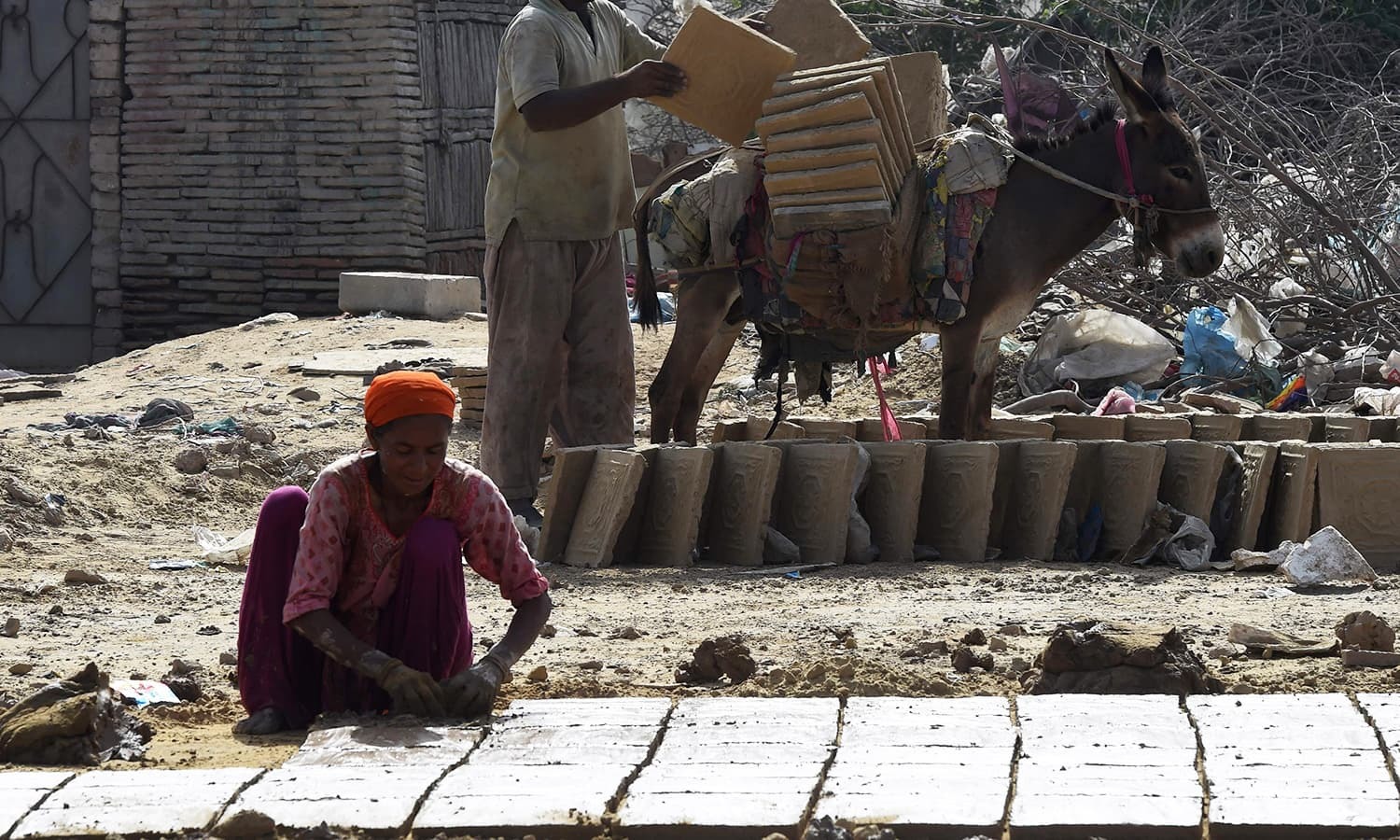Labour Day has been celebrated as a public holiday in most parts of the world to remind societies of workers' rights.
It is a culmination of what started off in the early 1800s as the 'Eight-Hour Day Movement', a campaign sought to stop the exploitation of workers who worked hard for long hours, which was eventually commemorated as an annual occasion to focus on broader labour rights.
Despite making some progress on labour rights, Pakistan has yet to fully grasp the movement's true purpose, as workers across the country continue to be subjected to gruelling, and often unjust, working conditions.
Female participation
Since the early 1990s, Pakistan's labour force has more than doubled and so has the participation rate of female labourers. As of 2015, the percentage of females in the labour force stood at 24.01 per cent, as compared to 12.2pc in 1995.
According to the Pakistan Bureau of Statistics's (PBS) Labour Force Survey (2014-2015), this increased participation comes at the cost of disproportionate placement, as more than nine-tenths of the female workers toil in farming activities (61.7pc of the total female labour force), elementary occupations (15.5pc), and crafts and related trade works (12.6pc), while males are more proportionately distributed in all activities.

A possible reason for such disparity can be attributed to the lack of schooling opportunities provided to women in Pakistan, hampering their chances of cultivating a diverse skillset necessary for opening up more opportunities.
A secondary reason could our patriarchal family structures and mindsets, which often oppress women and force them into jobs they do not choose for themselves.
While Pakistan has historically seen little or no gender wage differentials, the trend has reversed in the last five years with male-female wage disparities gradually tipping in favour of male workers.
Male figures and their impact
While female employment figures have seen much-needed improvement (although still leaving much room for growth), the labour force participation rate for males has actually fallen by 1.5 percentage points, according to an Institute of Policy Reforms (IPR) factsheet reviewing figures for the period of 2014-15.
According to the factsheet, the unemployment rate stood at just under 6pc, an apparent improvement from the figure reported in 2012-13. However, after appropriate adjustments, the unemployment rate rises to 8.5pc in the period of 2014-15.

The truly disturbing trend from this data is that the unemployment rate among literate workers is more than twice that of illiterate ones. The report further states that highest rate of unemployment, almost three times above the national average, is observed in the case of 'highly educated' workers. These are workers who hold degrees or postgraduate qualifications.
In this context, we see a vast number of 'idle' males aged between 15 to 29 years. These are individuals who are neither pursuing education nor actively searching for jobs. With more than one million such 'idle' young males, they are perhaps the most susceptible to falling into crime or even militancy.
The bigger picture
The overall message is that there are positive and negative developments in the Pakistani labour market.
The number of child labourers has consistently decreased over the years as focus on this issue has increased following the Generalised System of Preferences (GSP) Plus status granted to Pakistan by the European Union (EU), conditional on adherence to 27 international conventions, eight of which are directly linked to labour.
For example, the Government of Punjab has been actively making efforts to reduce child and bonded labour in brick kilns, offering special incentives for sending children to schools instead.
However, a key problem lies in the statistical monitoring of labour figures in Pakistan. According to the IPR fact sheet, between 2012-13 and 2014-15, only 1.3 million workers entered the labour market as opposed to the historical number of 1.5 million workers entering the market per annum.
Given the conditions in the labour market, this means that almost 1.7 million potential workers either opted out of joining the labour force in 2014-15 or that the PBS understated the size of the labour force. Either way, the situation requires attention by relevant authorities.
The fact sheet also points out that for a sustainable reduction in unemployment, GDP growth rate will have to rise to over 6pc.
Keep in mind that a recent report published by the International Monetary Fund (IMF) said, “In Pakistan, a broad-based recovery is expected to continue at a healthy pace, with growth forecast at 5pc in 2017 and 5.2pc in 2018, supported by ramped-up infrastructure investment.”
While the prospect of a 5pc growth rate might seem like the situation is under control, the reality of the situation is that the state and the private sector will have to collaborate on a wider scale and invest more in improving the skill endowment of the labour force if meaningful growth is our prime objective.











































